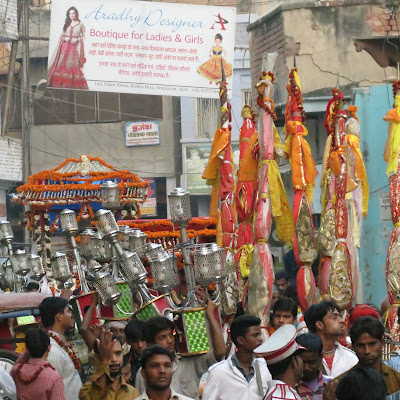 |
| हंस भगवान सिंहासन पर विराजमान हैं, एक ओर नारदजी और सनकादिक हैं और दूसरी ओर ब्रह्माजी नमस्कार की मुद्रा में खड़े हैं। |
 |
| निम्बार्क भगवान सिंहासन पर विराजमान हैं और निवासाचार्य जी उपदेश सुन रहे हैं। |
 |
| निम्बार्क भगवान के 8 अवतारों का संयोजन एक साथ-सुदर्शन, अनिरुद्ध, रंगदेवी, निम्बार्क, श्रीराधाजी की अंगकांति, सखा, धूसरगौ और लकुटी। |
























































